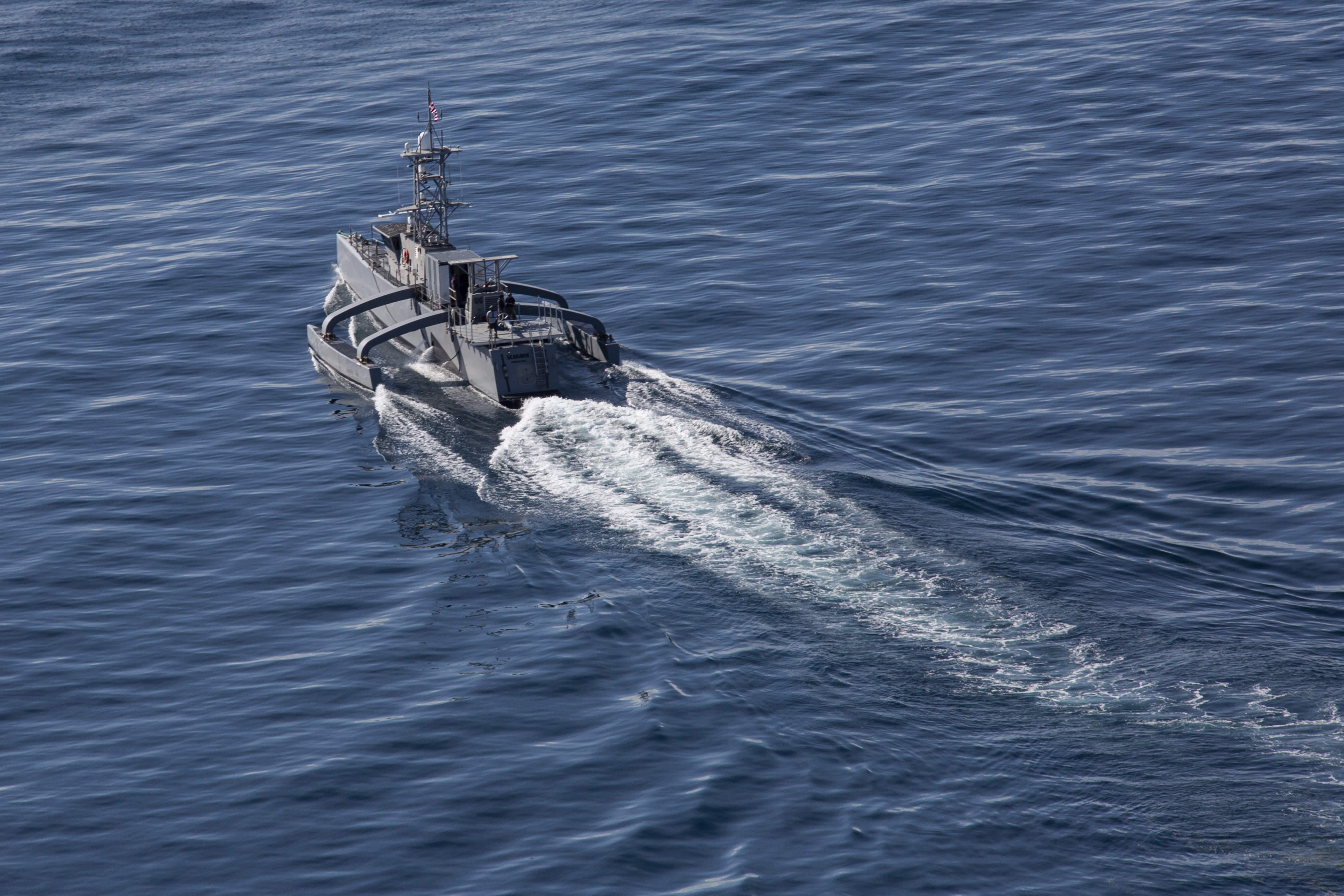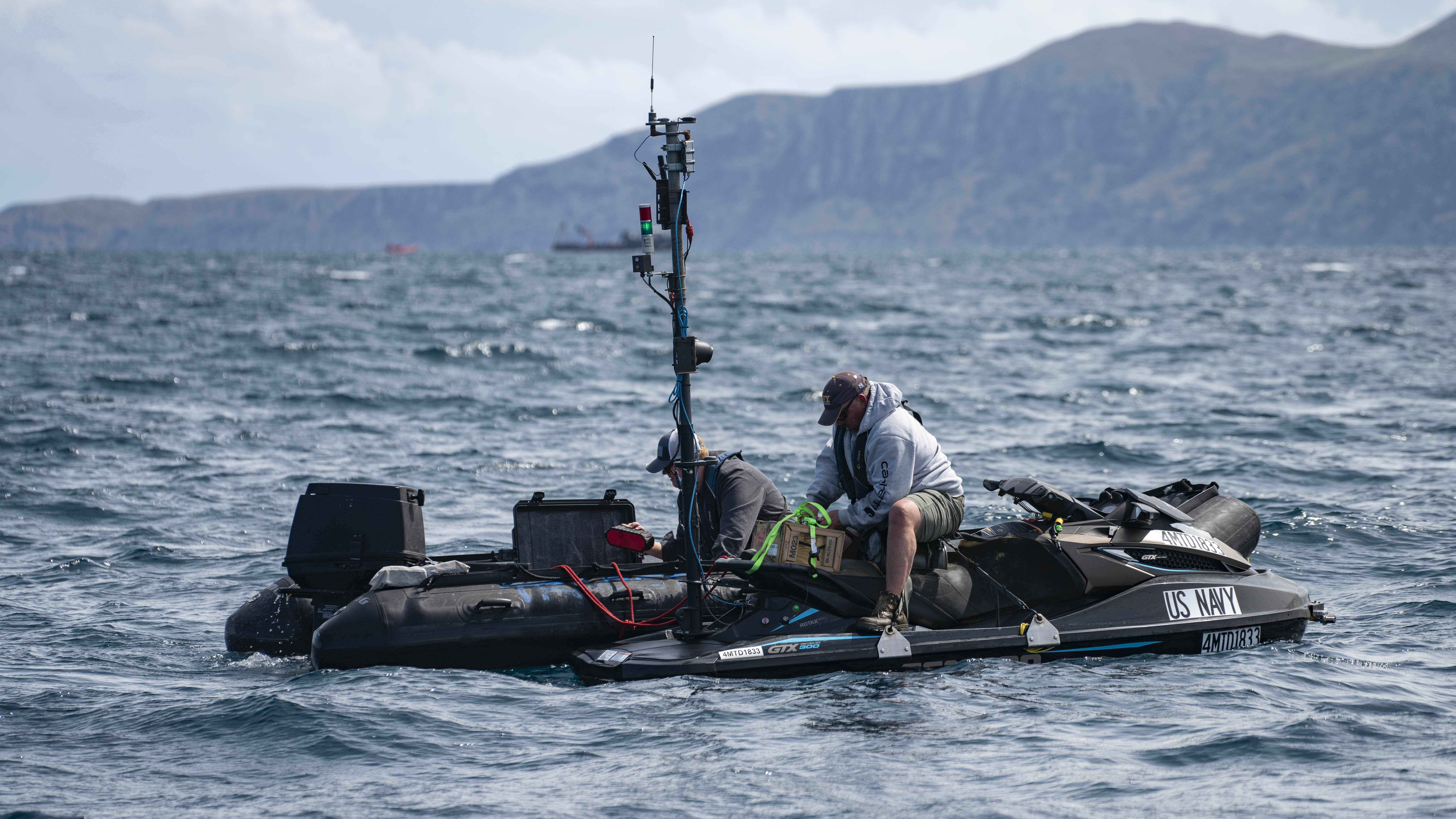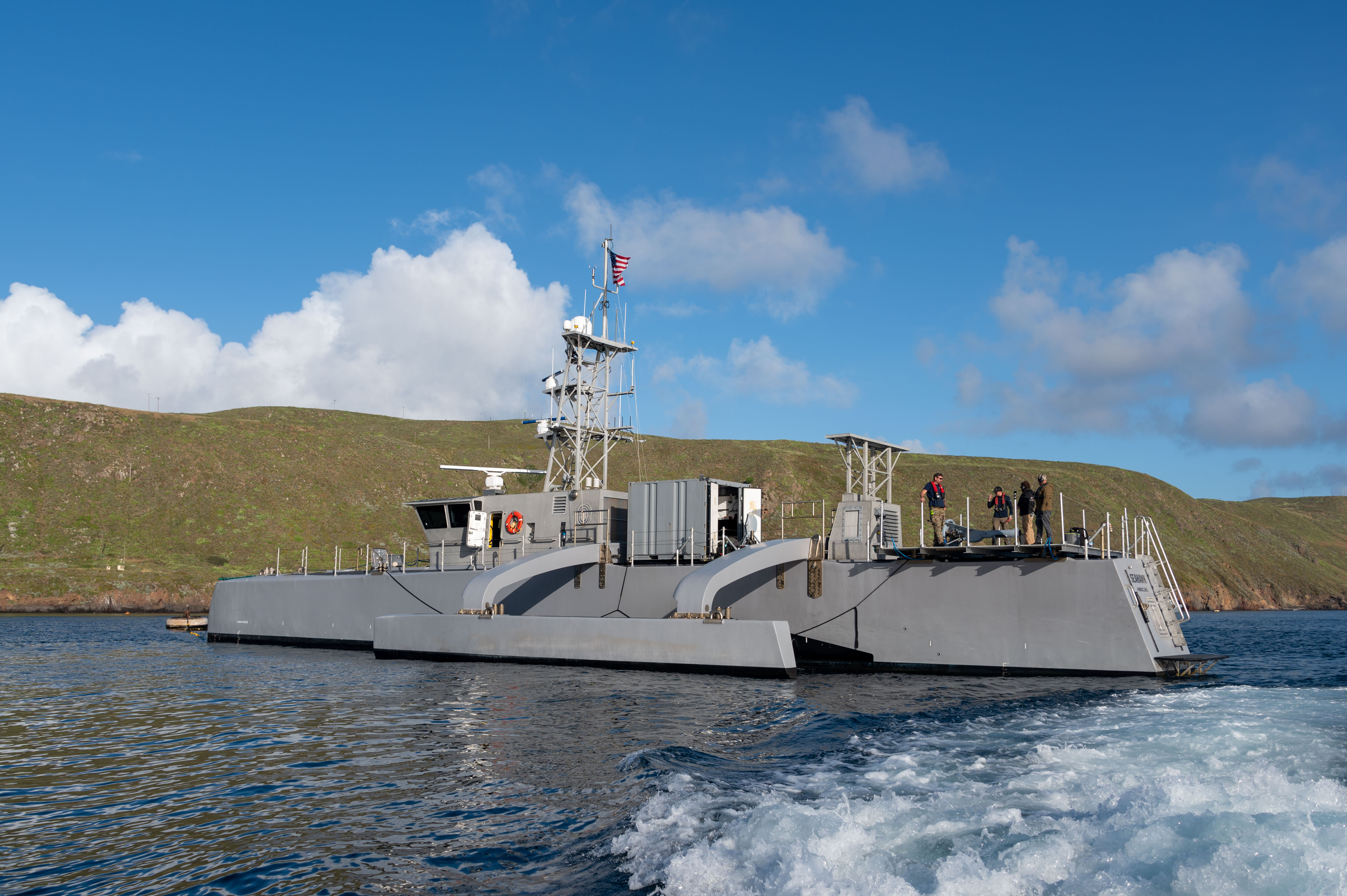
The future maritime fight, as Navy officials see it, will involve military forces with a mix of manned and unmanned aircraft, ships and other systems. Some actions will one day involve solely uncrewed platforms.
The U.S. Pacific Fleet is testing “fleet-centric” concepts and capabilities with a keen eye on unmanned systems to figure out how would the fleet connect, command and control disparate uncrewed systems that are operated remotely, semi or fully autonomously.
Integrated Battle Problem 23.1, which ran earlier this month off San Clemente Island and San Diego, Calif., focused on “long-range fire above and below sea, surveillance and reconnaissance, command and control, and re-constituting intelligence,” according to U.S. 3rd Fleet, which conducted the exercise. The Pacific Fleet joined Naval Air Forces, Naval Submarine Forces and Naval Special Warfare Command “to evaluate unmanned systems and highlight areas for improvement, providing that feedback to unmanned systems programs.”
The multidomain exercise is the second iteration of an experiment first held in 2021. During the Unmanned Integrated Battle Problem 21, Zumwalt-class destroyer USS Michael Monsoor (DDG-1001) provided a base for operations with unmanned surface vessels, underwater vehicles and aerial drones during experimentation with manned and unmanned systems.
But for IBP 23.1, officials wanted to test and operate unmanned systems together and figure out how unmanned systems fit into the bigger warfighting picture.
Among the experiments was launching an aerial drone off an unmanned ship. For that test, a VBAT unmanned aerial vehicle was launched from Sea Hawk, a medium USV belonging to Unmanned Surface Vessel Division 1 in San Diego.
“That’s a more complex scenario to where developing what that (tactics, techniques and procedures) looks like, operating parameters and how you would execute that in a contested environment or a combat environment,” Cmdr. Jerry Daley, the officer in tactical control for IBP 23.1 and USVDIV-1’s commander, said during a media conference call. “That is the next step in the progression of integrating unmanned systems into fleet operations across the continuum, both undersea, on the surface and in the air.”
The exercise “further advanced tactics, techniques and procedures and gave operators more hands-on experience with a longer list – and more diverse list – of systems at sea and in a combat environment,” Daley said. “It was predominantly, if not exclusively, all unmanned systems for this event.”
Integrating tech, platforms

Rapid technological advances in advanced communications and decision aids since the 2021 exercise “increases the ability to close kill-chains faster with persistent communication, even in a sort of contested environment or a simulated contested environment,” Daley said. Working together with industry and defense entities at testing events like IBP 23.1 “advances that and make us more effective as a team.”
A key objective this year was to increase lethality through experimentation, he said. Participating systems included medium displacement USVs Sea Hunter and Sea Hawk, MANTAS T-38 Devil Ray USV and RQ-20 Puma unmanned aircraft system. An MQ-9B unmanned aerial vehicle, built by General Atomics, was used in the exercise, Daley said.
“It brings additional… subsurface to surface warfighting capability to the fleet through its very specific modifications that General Atomics has made to the airframe for the maritime environment,” he said.
The testing during IBP 23.1 takes a page or two from the ongoing work and exercises by Task Force 59, the military’s test bed for unmanned systems in the Persian Gulf region.
Task Force 59 has “done an incredible amount of work integrating systems” from different companies’ unmanned assets, Daley said. “So we are taking that synergy… and focusing them on the PACFLEET objectives of how we want to advanced warfare with unmanned systems and in the development and in the execution.”
Much relies on the willingness of industry partners to work together, he said.
Over 20 organizations participated in IBP 23.1, according to 3rd Fleet. A full listing was not available.
“We are bringing these platforms from multiple companies together specifically to see, one, how they all perform and, two, how they integrate with each other, using some additional tools that we have with other partners during this event,” Daley said.
Along with unmanned systems, the exercise included testing and integrating various sensors, decision aids and operational tools including artificial intelligence “that connect all these systems,” he said. They also experimented with commercial satellites and line-of-sight communications to see how they could integrate into something of a naval intelligence, surveillance and reconnaissance capability, “collecting information in the maritime, that only increases our sort of aperture for what’s in the realm of possibilities. It’s tying in our current tactics, techniques and procedures and incorporating these unmanned systems in a more persistent and scalable way to increase our warfighting capability.”
More work ahead

Fleet officials haven’t detailed the next phase of the experimentation.
“We are going to continue to work through the problem sets that the fleets have,” Daley said. “The long-term goal… is to find ways to integrate these unmanned systems across the continuum – subsurface, surface and air – while having the ability to close kill-chains faster, keep them closed longer and be able to operate in a contested environment.”
Officials will determine “what works and what doesn’t work, and that’s what will inform the operational commander at PacFleet to create additional requirements for systems that are evolving and developing to enable the Navy to maintain a competitive edge,” he said.
“We will continue together the lessons learned, evaluate them and exercise in another fleet events these similar types of problem sets we exercised in IBP 23,” he added. “We will continue to iterate, incorporating our corporate partners in industry and, from a larger, holistic standpoint, we will continue to advance how we integrate unmanned systems into fleet operations. We will go out further and for longer and we will continue to increase the complexity as we move forward.”





